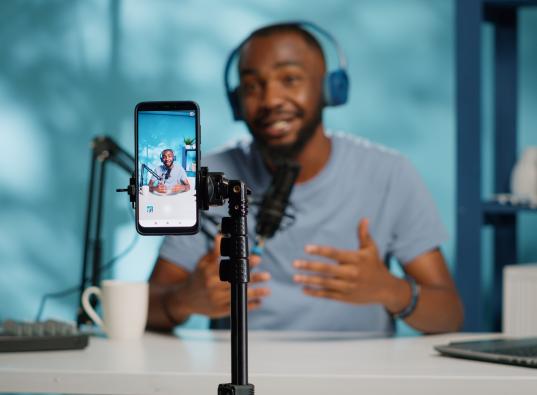Accessibility and chatbots: how to make your chatbot user-friendly for everyone
Chatbots are now ubiquitous. They used to be a thing of science-fiction novels and dreams, but now they are a major part of our everyday lives. We use chatbots to communicate with businesses, to book hotel rooms for holidays and to log complaints with service providers. Without these effective little artificial intelligence (AI) tools, life would be much harder.
But as with any effective digital marketing activities, some problems have arisen. People who have sight and hearing impairments need to be able to use chatbots too. But, unfortunately, some chatbots are simply not user-friendly for people with these impairments. If you want to ensure that everyone can use your chatbots, read on below for some advice on how to make them more accessible.
Content needs to be made perceivable
When someone who is partially sighted uses your website, they will need to be able to understand it. This means that you will have to ensure that the content you have on your site is perceivable for the chatbot.
For example, you will need to write text for elements that do not use text, such as images for your website. If your chatbot is placed in a pop-up window or users need to click an image to activate it, the tool the blind person is using to “read” the site might not read it out correctly and the user will not know there is a chatbot there to help them. If your chatbot speaks, you will have to provide subtitles for this for the hard-of-hearing. Ensure your content is organised in a manner that makes sense for the tools to access.
Think of alternative reply methods
Many chatbots use the “quick replies” method. That is, they offer users a button to click or press on for a quick reply to a question. These can be anything from “yes and no” answers to colour preferences for products.
However, the problem arises when the tools used to read the site do not see these quick reply buttons and see them rather as text boxes. It can be confusing for the partially sighted to attempt to reply to a chatbot question if they do not have access to these buttons. You could offer the option of voice-to-text replies for those who use microphones on their computer or insert tags which the voice reader could understand so they can offer the replies to the user. Remember, the voice reader simply reads out the code of the website, and might not “see” the buttons correctly.
Make it easy to find the chatbot
For those without a hearing or sight impairment, finding your chatbot on their screen will be easy. They will be able to see and hear the pop-up or click on the link to use it. But for those who have issues, these types of navigational issues can become debilitating.
Some people who are physically disabled access websites using hands-free mouse tracking and if you place the chatbot in an area that they cannot access easily by scrolling with their eyes, they will not be able to use it. Make it so that people can navigate directly to the chatbot by using a voice command or by having it at the top of the screen. Colour contrast can help to make the chatbot stand out but be sure to make it accessible for those who have colour-blindness too.
Avoid using jargon or acronyms
While jargon and acronyms are fun to use for a younger audience, they might be difficult to understand for those with hearing impairments or sight impairments. FYI, a voice reader such as JAWS (Job Access With Speech) might not explain the acronyms to the user, which could leave them feeling confused.
Your chatbot should have easy-to-understand conversational patterns of speech. Not only will users without any impairments appreciate this but users with them will be able to understand your site better. If you do plan on using an acronym or jargon, have an explanation included in the conversation. For example, if a chatbot has a question such as “What does IGTV mean for your business?” you should provide an explanation that IGTV stands for Instagram TV. You should also avoid using words in an unusual way or too many idioms, as this could also add confusion.
Make the conversation identifiable
There is nothing more annoying than having an online conversation and not being sure who has said what. This can be especially true if you are reading captions or having the conversation read out to you. To make your chatbot more accessible, make the conversation identifiable.
But what does this mean? Well, this means that every message in the conversation needs to be marked as “from the user” and “from the bot”. For example, your code would have an aria-label like this: aria-label=“the bot said” and aria-label=“you said”. This will make it easier for the voice reader to contextualise the conversation for visually impaired users and for those who need transcripts. Again, try not to use complicated replies which might make understanding the chatbot difficult.
Chatbots for all
Having a chatbot for your business is fantastic. Consumers can interact with your business in a new and exciting manner, allowing them to build trust in your brand and becoming return customers.
But if you do not make your chatbot accessible for everyone, you could be setting yourself up for a loss of clients. The UX (user experience) of a chatbot is vital, and you will need to think about making the conversation perceivable and identifiable in order for it to work for everyone. Your audience will grow and your brand will become synonymous with future thinking and accessibility.
Need Assistance with Digital Strategy?
Rogerwilco’s team of strategists, business analysts and data scientists is here to help.





